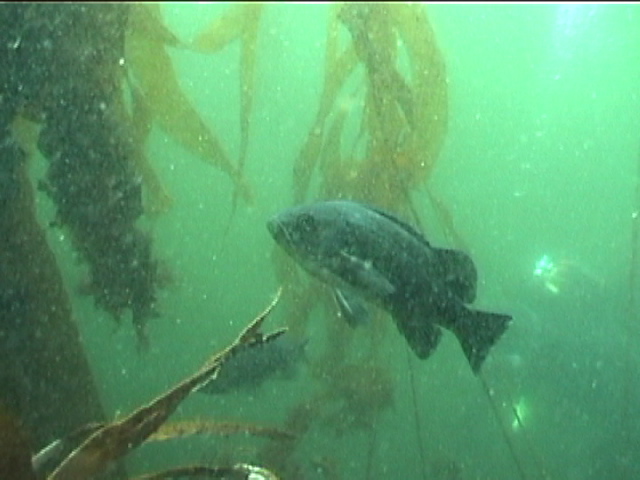Physical description
We frequently see schools of these rockfish hanging about when we are diivng at Race Rocks. As you can see in the video, they remain at a distance as the diver swims into the group. They are a thin bass-shaped fish with few head spines. It is black, blue and black, spotted with grey or blue and grey, with black spots on the backs and dorsal fins.
Global distribution:
It lives in the ocean from the area of Amchitka Island (Auletian Islands) southeast to S. Miguel island and S. Barbara (southern California). We can find it from central California to south eastern Alaska.
Habitat:
It usually lives in mid-water or surface, but it has been captured down to 1.200 feet.
Feeding:
Young fish eat plankton and larvae, old eat mainly fish and zooplankton.
| Predators: Their predators are ling cods, sea lions and pigeon guillemots. Reproduction: Females are viviparous. From September to November they store the sperm before fertilizing the eggs. They let go young from January to May, peaking in February off California. One interesting fact: They live in groups of thousand of elements. They are good swimmers, in fact they can move hundred of miles.References: Probably more than you want to know about the fishes of the Pacific Coast, M. Love, Really Big Press, II edition. |
Andy Lamb and Phil Edgell: “Coastal fishes of the Pacific Northwest”
J.L Hart: “Pacific fishes of Canada”
Domain Eukarya
Kingdom Animalia
Phylum Chordata
sub phylum vertebrata
Class Actinopterygii
Order Pereciformes
Family Scorpaenidae
Genus Sebastes
Species melanops
Common Name:Black Rockfish
and Image File |
 The Race Rocks taxonomy is a collaborative venture originally started with the Biology and Environmental Systems students of Lester Pearson College UWC. It now also has contributions added by Faculty, Staff, Volunteers and Observers on the remote control webcams. March 15 2005- Stefania Marchese PC, year 32 (Italy) The Race Rocks taxonomy is a collaborative venture originally started with the Biology and Environmental Systems students of Lester Pearson College UWC. It now also has contributions added by Faculty, Staff, Volunteers and Observers on the remote control webcams. March 15 2005- Stefania Marchese PC, year 32 (Italy) |
Name: Stefania Marchese,
PC, year 32 (Italy)

